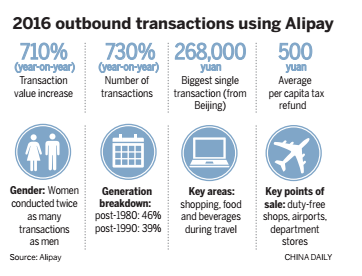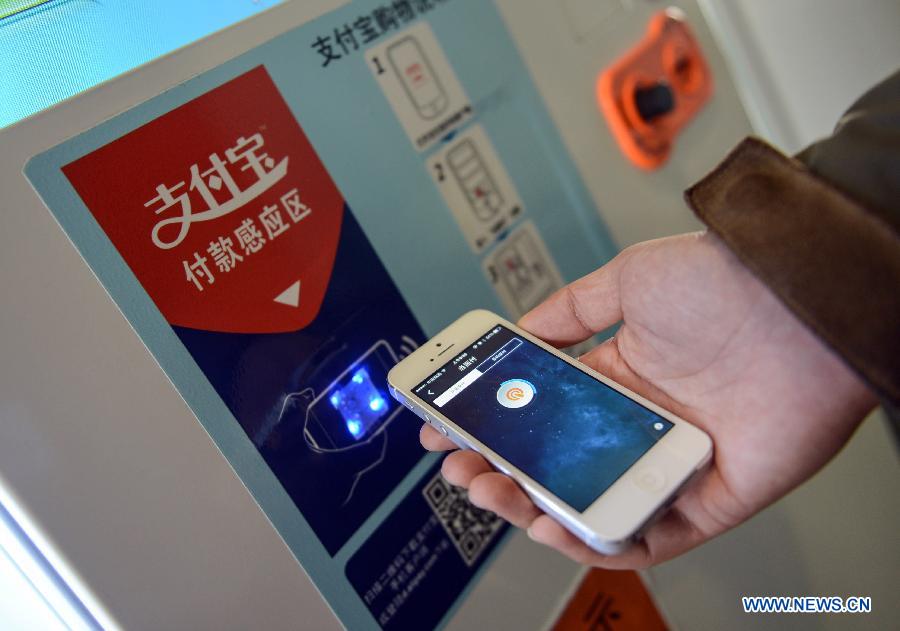January 5, 2017:Â Chinese mobile payments are expected to continue to surge overseas this year, as tech-savvy millennials increase spending on travel and purchases, analysts said.
Outbound spending by Chinese tourists via mobile devices in 2016 jumped more than sevenfold year-on-year, with the number of transactions soaring by 730 percent, the country’s largest third-party payment provider, Alipay, said on Wednesday.
The prolific growth was largely driven by China’s millennials — those born between the early 1980s and late 1990s — who are accustomed to making purchases on smartphones. They were responsible for as much as 85 percent of overseas wireless payments through Alipay last year.
Transactions made via mobile wallets could surge to 90 percent of the total business volume this year, up from 71 percent last year, as more millennials travel and spend, according to James Yan, research director at Counterpoint Technology Market Research.
The mobile shopping mania is set to continue for online and brick-and-mortar businesses, fueled by expansion overseas by Alipay and archrival WeChat Pay, which is run by internet giant Tencent, Yan said.
The two, which Counterpoint said claimed over 80 percent of China’s mobile payment service, have taken great leaps to broaden overseas mobile payment services.

With 450 million users, Alipay is accepted by more than 80,000 merchants worldwide in 18 currencies, including high-end department stores such as Harrods and Printemps, which are meccas for Chinese consumers.
It hopes to serve 2 billion customers over the next decade around the world, with 60 percent of its transaction volume coming from outside China.
Meanwhile, Tencent is quickly growing its market share to about 25 percent, as it anchors on a surging number of Chinese tourists who are among the 762 million users of its popular mobile app WeChat, which enables cashless payments.
More than 10 countries and regions now support WeChat payments, and the number is expected to explode within a year or two, the company said.
Xu Mingqi, a senior researcher at the Shanghai Academy of Social Sciences, said younger consumers are big spenders overseas.
“Being mobile-crazy and open-minded, a lot of them enjoy a far higher standard of living and are exposed to opportunities to study and travel abroad,” he said.
Asia-Pacific markets stand to benefit the most, with the biggest upticks in mobile spending in South Korea, Thailand, Hong Kong, Japan and Australia, according to Alipay.
Alipay claims around 65 percent of the country’s 12 trillion yuan ($1.73 trillion) mobile payment market, according to Counterpoint. Overseas transactions now account for less than 10 percent of all mobile-enabled transactions.







